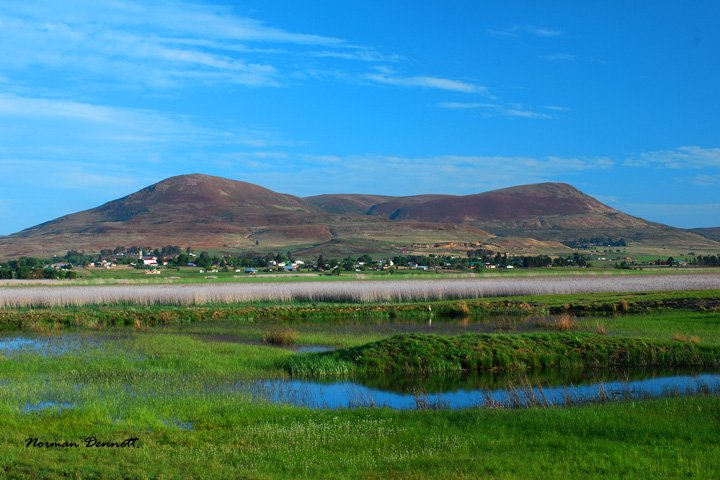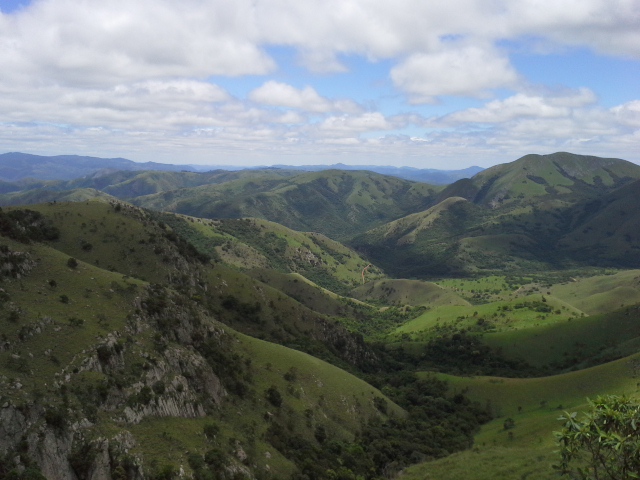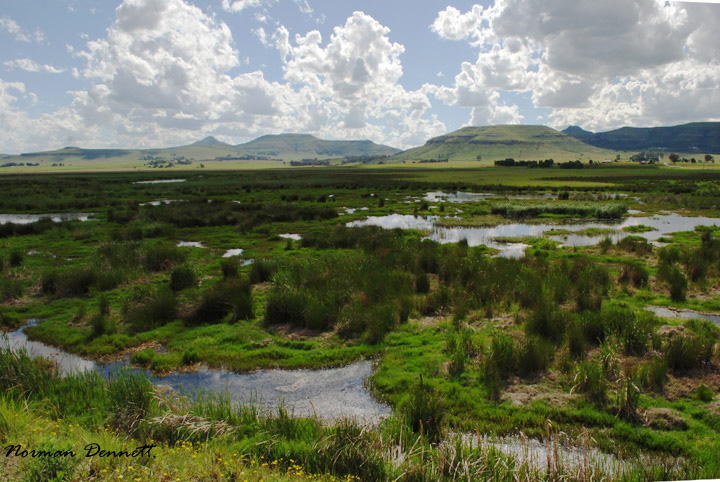Mining - coming to a protected area near you

On 28 May 2015 the Traditional Healers Organisation laid criminal charges against mining company Aquila Steel SA (Pty) Ltd and three of its directors for illegally causing extensive damage to one of South Africa’s most sacred cultural sites.
Aquila Steel desecrated the site near Thabazimbi in breach of the conditions of its prospecting rights and of a number of environmental and water laws. This is far from the only case in South Africa where a prospecting or mining right has been granted, or is being considered by the Department of Mineral Resources, in a place of significant cultural, ecological, historic or tourism value. With the number of prospecting and mining rights being awarded in such places continually on the rise, mining poses a growing threat to our ecological and cultural heritage.
In 2007 and 2008 Aquila Steel, at that time the South African subsidiary of then Australian-listed Aquila Resources Limited, obtained prospecting rights for iron ore on two properties near Thabazimbi in Limpopo. The “Madimatle” Mountain and Gatkop caves, sites of significant cultural, spiritual and historic value, are situated on these properties.
In breach of its prospecting rights, and without the required environmental authorisation, Aquila Steel cleared over 33km of roads all over the Madimatle Mountain, and drilled in approximately 200 locations, illegally clearing vegetation and protected tree species. The Department of Mineral Resources (DMR), the Department of Water and Sanitation, and the provincial environmental authorities took no steps to stop Aquila Steel’s activities, and have not ordered the company to rectify the damage. Instead, the DMR is considering Aquila Steel’s application for a mining right, which, if granted, would effectively permit the company to remove the mountain top.

Mabole Protected Environment with Wakkerstroom in the background. Photo by Norman Dennett.
Late last year the SA Heritage Resources Agency, in response to submissions from those objecting to Aquila Steel’s illegal activities, ruled that no exploratory mining activity can take place at or near the Madimatle Mountain for two years, while the Agency decides whether or not the area merits National Heritage status. Aquila Steel has appealed this ruling.
Setting aside for the moment the question of Aquila Steel’s unlawful behaviour, it is problematic that prospecting rights were granted to it in the first place: the Madimatle Mountain is of clearly documented historic, cultural and spiritual significance, as evidenced by the SA Heritage Resources Agency’s ruling last year. The mountain is also located within ten kilometres of the Marakele National Park, in an area designated as an important eco-tourism attraction, which forms the core of the Waterberg Biosphere Reserve, formally designated as such by UNESCO in 2001.
The granting of prospecting rights to Aquila Steel is only one example of a broader problem of inappropriate and irrational granting of prospecting and mining rights by the DMR. The department increasingly fails to take considerations of environmental, cultural, historical or tourism value into account when granting rights. This is evidenced by numerous grants of prospecting and mining rights in and near sensitive and protected areas in recent years, for example:
The grant, in early 2015, of a phosphate mining right to Elandsfontein Exploration and Mining (Pty) Ltd (EEM) on a farm bordering the West Coast National Park, a critical biodiversity area and the location of a world-renowned fossil site. Heritage Western Cape was forced to launch urgent proceedings in the Western Cape High Court to interdict and restrain EEM from continuing with vegetation clearance and road construction (commenced illegally without environmental authorisation), pending the outcome of an appeal against the grant of the mining right.
The grant of a coal mining right in 2014 to Atha Africa Ventures (Pty) Ltd inside the Mabola Protected Environment in Mpumalanga, eight months after the Mpumalanga MEC had declared the area a protected environment. The Mabola Protected Environment covers an area of immense hydrological importance. It is the source of three major South African rivers (the Tugela, the Vaal and the Pongola) and is composed mostly of wetlands, wetland clusters and pans. It has been classified as a Strategic Water Source Area, a National Freshwater Ecosystem Priority Area and an Aquatic Critical Biodiversity Area. The fact that it is a protected environment means in law that commercial mining can only take place with the permission of both the Ministers of Mineral Resources and Environmental Affairs. As far as the coalition challenging the grant of the right is aware, this permission has not been given.
The grant of a coal mining right to Coal of Africa (Pty) Ltd, also a subsidiary of an Australian company, in close proximity to the Mapungubwe National Park in Limpopo in 2010. The Mapungubwe Cultural Landscape was listed as a World Heritage Site in 2003. The grant of the mining right to Coal of Africa triggered an unprecedented civil society challenge, detailed in the Centre for Applied Legal Studies’ recently published book “The Mapungubwe Story: A campaign for change”. The mine was ultimately given the go-ahead. Within two years of starting operations, it was closed, and most employees have been retrenched or “redeployed”. Coal of Africa claims that the closure is to allow for expansion and reconfiguration.
The grant of a right to Barberton Mines (Pty) Ltd in 2006 to prospect for gold and silver inside the Barberton Nature Reserve near Nelspruit. Legal challenges in relation to this right are still ongoing.
The grant of numerous coal prospecting and mining rights in sensitive ecosystems, wetlands and areas earmarked for protection in Mpumalanga.

Barberton Nature Reserve. Photo by Marthan Theart.
Enormous resources are expended in challenging mining rights that should not properly have been granted in the first place. The DMR routinely grants rights despite sub-standard environmental studies, flawed public participation processes and inadequate proof of the applicant’s technical expertise and financial resources. The Department appears impervious to expert assessments commissioned by interested and affected parties that describe in meticulous detail the often obvious flaws and inconsistencies in the information submitted by rights applicants. Granting rights under these circumstances is a breach of the law, but challenging the grant embroils objectors in years of legal battles that are drawn out endlessly by the Department’s resolute failure to answer correspondence and decide internal appeals, and its frequent failure to file papers in court proceedings and comply with court orders.
Civil society and even the mining industry itself have repeatedly called for the Ministers of Mineral Resources to exercise the power in terms of section 49 of the Mineral and Petroleum Resources Development Act to declare “no go areas” for mining. This would mean that the DMR would not be allowed even to accept an application for prospecting or mining in these areas, preventing the costly and damaging battles that are so often necessitated by the DMR’s failure to properly apply the law in its assessment of rights applications.
However, these calls have so far gone unheeded, and as a result concerned and affected citizens and communities with extremely limited resources are forced into mega-battles against the state. This is nowhere more true than it is of the ongoing challenge to the mining right application by Ibutho Coal for six open cast coal pits on the border of the Imfolozi Park in KZN. Hluhluwe-iMfolozi Park is the oldest proclaimed nature reserve in Africa and Ibutho Coal’s application has sparked local and international outrage.
The draft environmental impact report prepared by Ibutho Coal’s own scientific consultants concludes that granting the right could irreparably damage South Africa’s tourism industry and its reputation as guardian of some of the world’s last remaining true wilderness areas. The fact that the area is currently suffering its worst drought in 25 years should also play a crucial role in the decision-making process, as open-cast coal mining is water-intensive and poses a high risk of pollution to freshwater resources. Unfortunately, recent history suggests that it is likely that the DMR will grant the right anyway.
Our Constitution gives every South African the right to have the environment protected for the benefit of present and future generations. Regardless of any economic benefits brought by mining, rights must be granted appropriately. We have so few places of truly unspoilt and irreplaceable ecological and cultural value left. Allowing mining in these places may bring short-term benefits, mostly to a small elite. But for the rest of us, it threatens our water security and biodiversity, destroys the places that people travel from all over the world to see, and denies us the opportunity to use these precious resources to create long-term, sustainable employment.

Wetlands of the Mabola Protected Environment. Photo by Norman Dennett.
Davies is an attorney with the Centre for Environmental Rights. Views expressed are not necessarily GroundUp’s.
Support independent journalism
Donate using Payfast

Don't miss out on the latest news
We respect your privacy, and promise we won't spam you.
Letters
Dear Editor
I am one of the descendants of Moloantoa and Manaiwa family that lodged the claim for Madimatle which comprises of two farms. Our grandfathers are buried there and the family was forcefully removed in the 1930's and the relocated to different areas.
We lodged our claim in Pretoria and they transferred it to Limpopo province as Thabazimbi falls within Limpopo.
Dear Editor
The facts are not quite accurate in this article, Helen Zille made sure that Heritage W.Cape does not get the interdict, now we as a community (West Coast Environmental Ass.) need to scrape money together to fight this in the High Court!

This article is licensed under a Creative Commons Attribution-NoDerivatives 4.0 International License.
